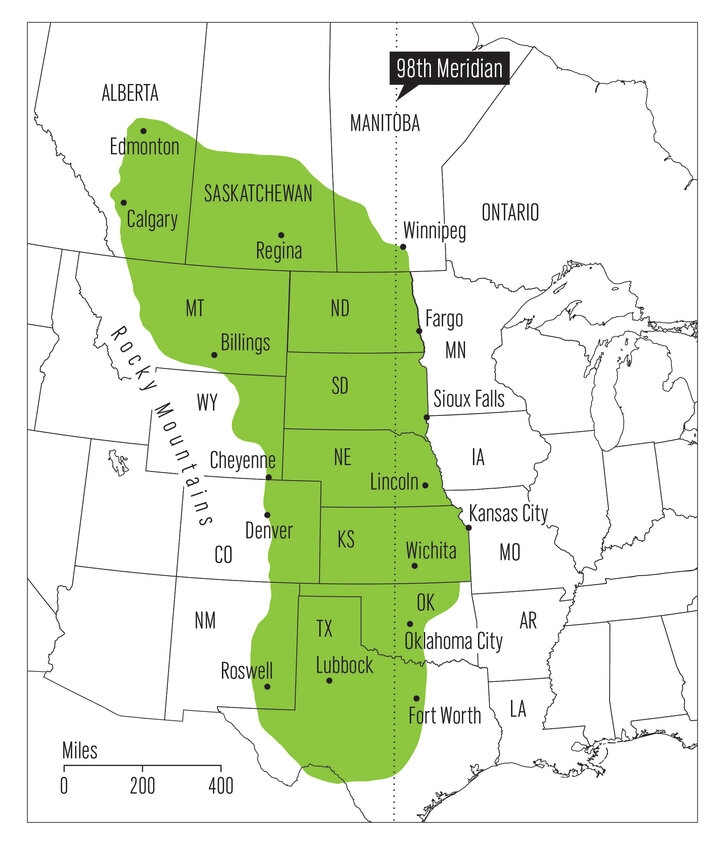The Center for Great Plains Studies, with its Great Plains Art Museum, is an interdisciplinary educational and cultural hub that cultivates awareness of and engagement with the diverse people, cultures, and natural environments of the Great Plains.
About the Center
The Center for Great Plains Studies is a regional research and outreach program established in 1976 at the University of Nebraska. The Center operates the Great Plains Art Museum, the Plains Humanities Alliance, undergraduate and graduate programs, various scholarly projects, and outreach programs; it publishes Great Plains Quarterly and Great Plains Research; it presents public lectures and interdisciplinary symposia. Much of its work is accomplished by its Fellows and Associate Fellows.
- A sparsely-populated region with highly variable weather set against grassy, rolling land, the Great Plains stretches westward from the Missouri River at Omaha and Kansas City to the Rocky Mountains, and northward from the Texas Panhandle into the Canadian Prairie Provinces.
- The region invites inquiry into the relationships between its natural environment and the cultures brought to it by its various inhabitants, as scholars and residents work both to preserve healthy eco-systems and build thriving human communities.
About the Center's Work
The Center is known for scholarly accomplishments, striking art exhibitions, and informative talks. But more than that, it is a place to learn from the past, confront issues shaping our region today, and look to what the future holds for the Great Plains. Our programs contribute to preserving and enriching life in the Great Plains.
Fellows of the Center work as faculty and staff on all four campuses of the University of Nebraska. We also have Affiliate Fellows who are faculty at many other universities across the U.S. and in other countries or are persons who have a professional interest in the Great Plains and the purposes and program of the Center. And our Great Plains Graduate Fellows are doctoral or master’s students in the process of completing their degrees in their own disciplines and departments.
The mission of the Center is to increase understanding of and appreciation for the people, cultures, and natural environment of the Great Plains. Increasing understanding requires research, so we foster studies of the region, in part by publishing scholarly journals and other outlets which report research results. Increasing appreciation implies engaging the public, so we organize public lectures and symposia, publish books and post on social media, and in other ways seek to stimulate conversations about the Great Plains. We want the Center to be a place of bold ideas and regional engagement. As we work to conserve our eco-system and help human communities thrive, we hope you'll take a look at what we offer.
Vision Statement
- The Center for Great Plains Studies, with its Great Plains Art Museum, is a welcoming space and dynamic showcase for regional voices, stories, art, and research.
- We promote collaborations and connections among the arts and sciences across the four NU campuses.
- We serve as a bridge between scholars and community members engaged with the region’s diverse peoples, cultures, and environments, stressing the significance of its Indigenous peoples.
- We confront the region’s major challenges and complexities.
Approved April 28, 2022
Values Statement
- We acknowledge that the lands we occupy are the past, present, and future homelands of many Indigenous peoples.
- We champion curiosity, ongoing inquiry, and creative expression through connecting the arts, humanities, natural sciences, and social sciences.
- We welcome dialogue and difficult conversations about our region.
- We convey the complexity of our region through diverse voices.
- We invite engagement with the public and academic communities near and far.
- We respect the region’s lands, waters, and ecologies.
- We are invested in serving the public.
Approved April 28, 2022

About the Great Plains map
This map was created by the editors of the Encyclopedia of the Great Plains, who took into account several factors including ecology, geography, culture, history, and more. The Great Plains is a vast expanse of grasslands that incorporates more than 1,800 miles north and south and more than 500 east to west. The region was once labeled “The Great American Desert,” but is now thought of as a more fertile, semi-arid grassland teeming with biodiversity, though agriculture-based irrigation is increasingly displacing the original prairie. The Plains is home to impactful history including the Dust Bowl, the massacre at Wounded Knee, the Lewis and Clark Expedition, and many more events. It has been inhabited for more than 12,000 years, since Paleo-Indians hunted mammoth and bison, though the term “Great Plains” has only been widely accepted since the 1930s.
Any region is both a real place and a concept, leaving us with the challenge of defining borders via the human and physical environments. These borders are not hard ones, but they are logical according to the physical, historical, and cultural characteristics that inhabit the region. For more information on the Great Plains, please see the Encyclopedia of the Great Plains and The Atlas of the Great Plains.
-- Adapted from the Encyclopedia of the Great Plains